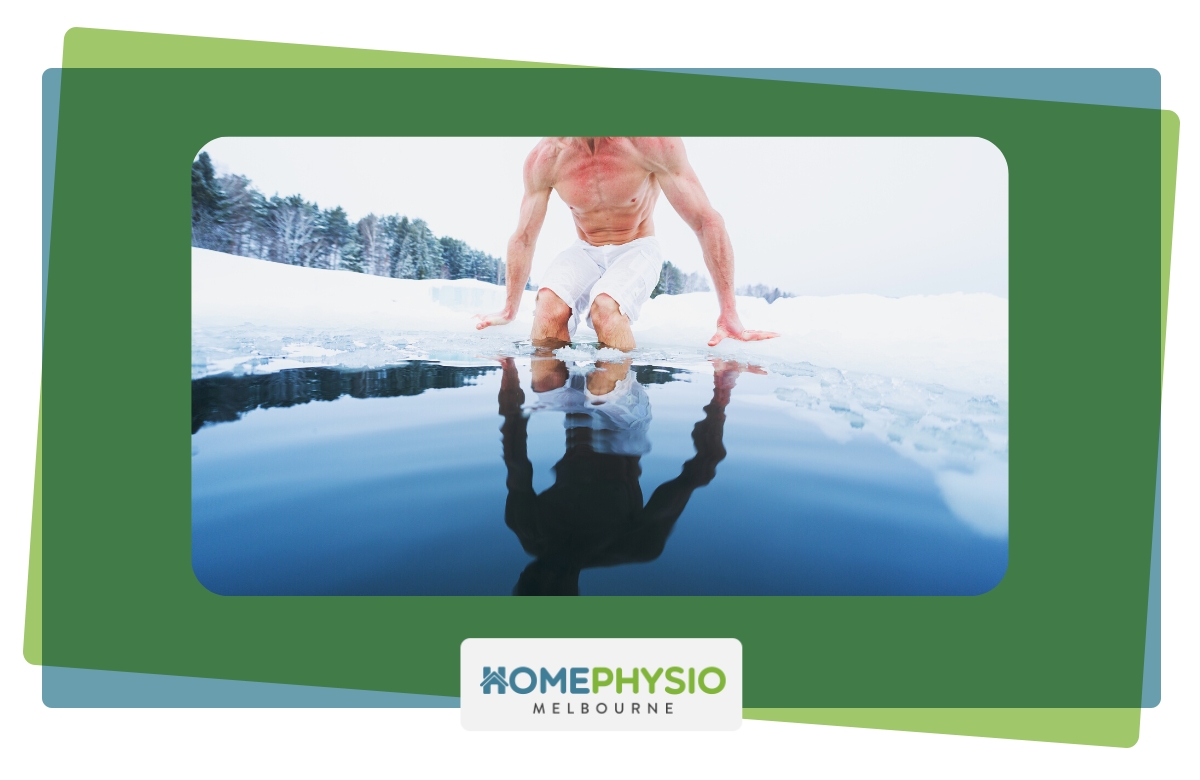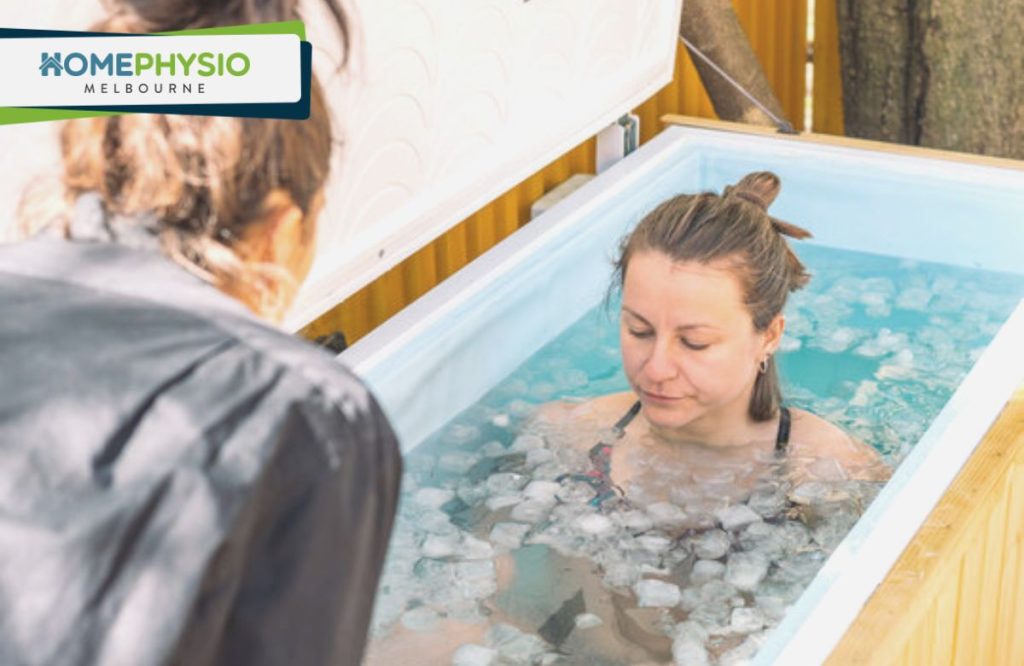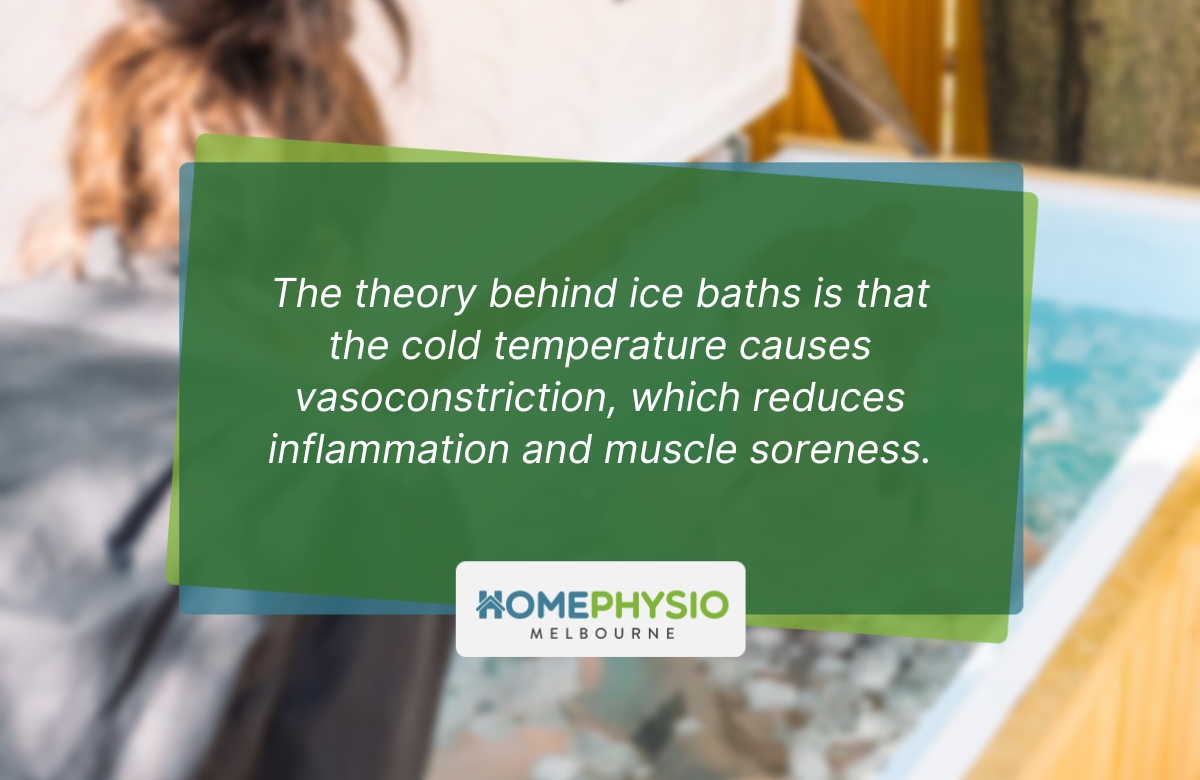Have you ever heard of ice bath therapy? It may sound intimidating, but it’s becoming increasingly popular among athletes and fitness enthusiasts. But what exactly is it, and what are the benefits?
Cold water immersion therapy, or ice bath therapy, involves temporarily submerging the body in cold water. It has been used for centuries as hydrotherapy and is now gaining recognition for its potential health benefits.
While it may not be the most comfortable experience, ice bath therapy is believed to have many benefits, from reducing inflammation and muscle soreness to improving circulation and boosting the immune system.
The potential benefits of cold water immersion
- Cold water immersion increases blood circulation and improves lymphatic movement, which benefits a healthy heart, a robust immune system, balanced mental health, and a high vitality level.
- Cold water immersion can be beneficial when losing weight. Cold water immersion can improve metabolic rate by up to 16% when done regularly.
When immersed in cold water, the body has to work hard to maintain its average internal temperature. The metabolic rate increases throughout this procedure to generate heat for the body. When done consistently, this can result in weight loss.
- Cold therapy increases parasympathetic activity in the body, which can help with disorders including depression, anxiety, and digestive issues. It activates the neurological system and hormones, which can drastically modify our physiology, and so taps into the body’s natural healing potential.
- Cold water immersion may also help athletes recover faster from a strenuous workout. The cold temperature helps reduce inflammation and muscle spasms, while the increased blood circulation helps bring oxygen to the muscles and remove waste products, aiding in healing. In addition, cold water can numb pain receptors and reduce nerve sensitivity, allowing for a faster return to normal activities.
What does the scientific research conclude?
The theory behind ice baths is that the cold temperature causes vasoconstriction, which reduces inflammation and muscle soreness. However, there is limited evidence to support this claim.
One of the earliest studies on ice baths was conducted in 1981 by researchers at the University of Glasgow. The study found that athletes who used ice baths experienced less muscle soreness and had faster recovery times than those who did not. However, the study was small and needed a control group, which made it difficult to draw definitive conclusions.
Since then, several other studies have examined the effects of ice baths on recovery. A 2015 meta-analysis of 17 studies found that cold water immersion effectively reduced muscle soreness and improved recovery. However, the authors noted that many studies had small sample sizes and varying cold water immersion methods, making it difficult to generalise the results.
Another study published in 2018 in the European Journal of Applied Physiology found that ice baths did not significantly reduce muscle damage or inflammation compared to active recovery (e.g., jogging or cycling) or passive recovery (e.g., rest). The study included 40 participants who were randomly assigned to one of the three recovery methods after performing eccentric exercise (which causes muscle damage). The authors concluded that ice baths may be different from other recovery methods.
One of the main limitations of studies on ice baths is the need for more standardisation in the methods used. For example, some studies use ice water, while others use cold tap water. The temperature and duration of immersion also vary widely between studies. This makes it difficult to compare results and draw definitive conclusions about the effectiveness of ice baths.
Risk factors of ice bath therapy
In addition to the limited evidence for ice baths, there are some potential risks to consider
- In the initial stages of immersion, the cardio-pulmonary system can experience a type of shock due to the temperature change. Because of this, people with a history of cardiac arrhythmia issues or autonomic dysfunction should avoid this type of therapy.
- Cold water immersion can induce severe cardiac stress, leading to heart attacks and death. Cold water exposure can affect your blood pressure, circulation, and heart rate.
- Prolonged exposure to cold water can lead to hypothermia, which can be dangerous. Individuals with certain medical conditions (such as Raynaud’s disease) or who are pregnant should avoid ice baths altogether.
If you have these underlying disorders, the cold can damage your body’s sensory nerves and response rate, potentially paralysing you.
If you are considering this form of therapy and have a history of either of these concerns, please see your healthcare practitioner first.

Final thoughts on ice bath therapy
While some studies have suggested that ice baths may effectively reduce muscle soreness and improve recovery, there is still limited evidence to support this claim. Further research is needed to determine the optimal method and duration of cold water immersion and its potential risks and benefits.
As with any recovery technique, it is essential to weigh the potential benefits against the risks and to consult with a healthcare professional before trying it.
Book an appointment with us today! Our team of experts will lead you down the best treatment path for your condition.
Author
-

Hub & Spoke is a unique Allied Health service that delivers the latest in therapies and treatments to you both in-home or at work to make health care accessible to everyone.
View all posts

















